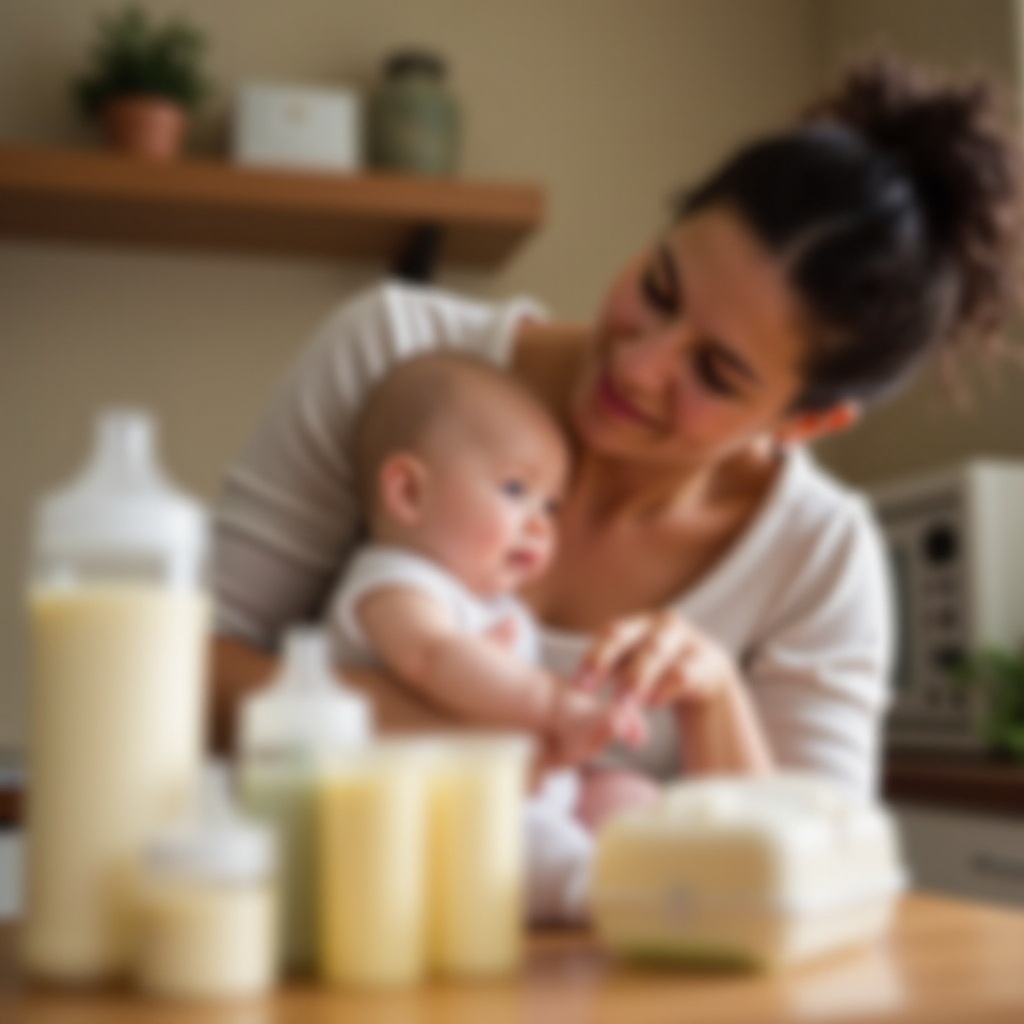Introduction
Celebrating your baby’s first year introduces new changes, especially in their feeding habits. Understanding how many bottles your 1-year-old needs is essential for maintaining their health and ensuring a successful transition from bottles to cups. This comprehensive guide will cover recommended bottle counts, milk intake, and expert advice to ease this phase.

Understanding Your 1-Year-Old’s Nutritional Requirements
By the time your child reaches a year old, their diet should begin balancing milk and solid foods. Milk remains crucial, offering essential nutrients like calcium and vitamin D, which support growing bones and overall development.
– The Role of Milk in a Toddler’s Diet: Milk provides vital nutrients, though it’s important to complement it with diverse foods. Experts recommend toddlers consume 16 to 24 ounces of milk daily for adequate nutrition.
– Balancing Milk with Solid Foods: To encourage a well-rounded diet, introduce a variety of solid foods. Include fruits, vegetables, proteins, and grains alongside milk to satisfy their evolving dietary needs.
Understanding how to balance milk intake with solids sets the stage for determining the appropriate number of bottles for your toddler.
Recommended Bottle Count and Milk Intake for Toddlers
Navigating the shift in nutritional requirements demands adjustments to your toddler’s bottle feeding schedule. The number of bottles varies based on individual needs, so let’s explore common guidelines.
– Daily Bottle Frequency: Generally, a 1-year-old will need about 2-3 bottles per day. This frequency varies depending on whether they’re breastfeeding, consuming formula, or transitioning to whole milk.
– Appropriate Amount of Milk: Each bottle typically contains 6 to 8 ounces of milk. The total daily consumption should range from 16 to 24 ounces to ensure a balanced intake without over-relying on bottles.
With this understanding of how many bottles and how much milk your child needs, you can begin introducing them to cup usage.
Transitioning from Bottles to Cups
Transitioning from bottles to cups signals a critical developmental milestone. Identifying readiness indicators and selecting the right cup are pivotal to the process.
– Signs Your Toddler is Ready: Look for readiness cues such as improved hand-mouth coordination, interest in adult cups, and mimicking behaviors. These signs suggest they’re prepared to begin using cups.
– Choosing the Right Cup: Start with a sippy cup or one with handles to simplify the transition. Gradually encourage use of open cups as your toddler gains confidence in handling liquids independently.
Mastering the use of cups brings several benefits and can help reduce reliance on bottles, fostering independence in your child.
Strategies for Reducing Bottle Dependency
To allow for a smooth transition and promote healthy habits, gradually lessening bottle dependence is crucial. This process usually requires a thoughtful approach.
– Gradual Weaning Techniques: Slowly decrease bottle feedings by replacing them with cups. Start by substituting one bottle per day with a cup, then gradually use cups more frequently over a few weeks.
– Encouraging Self-Feeding: Support your child’s autonomy by letting them handle cups independently. Celebrate their progress and offer various cups to keep them engaged.
Promoting their independence reduces bottle necessity and helps them prepare for any feeding challenges that may arise.

Addressing Common Feeding Challenges
During this transition interval, you might face typical feeding hurdles that require patient resolution and inventive solutions.
– Dealing with Bottle Refusal: Some toddlers resist giving up their bottles. Combat this by using entertaining, colorful cups and gently explaining the advantages of using cups.
– Managing Picky Eaters: For toddlers developing picky eating habits, provide new foods alongside their preferred ones. Implementing a routine encourages meal time discipline, reducing reliance on milk for satisfaction.
Tackling these feeding challenges with patience will create a smoother experience for both you and your toddler, making feeding sessions less stressful.
Expert Tips on Toddler Feeding
Engaging with professional guidance, such as pediatricians and nutritionists, can ease your concerns and enhance your strategies.
– Insights from Pediatricians: Regular checkups with your pediatrician will track your child’s growth and nutrition. They provide tailored advice to accommodate your toddler’s needs.
– Nutritional Recommendations: If you’re anxious about your toddler’s diet, consulting a nutritionist can be beneficial. They may suggest alternative milk options or nutrient supplements if required.
With these expert insights, you can effectively manage and support your toddler’s feeding practices, ensuring they gain independence with a well-balanced diet.

Conclusion
By comprehending how many bottles your 1-year-old requires and facilitating their move to cups, you lay the groundwork for healthy dietary practices. Through implementing the outlined strategies and advice in this guide, your toddler can become more autonomous while receiving proper nutrition.
Frequently Asked Questions
How many times a day should my 1-year-old drink milk?
A typical 1-year-old needs about 2-3 servings of milk daily, each approximately 6-8 ounces.
What is the best way to transition my toddler from a bottle to a cup?
Begin with sippy cups, gradually reduce bottle feedings, and encourage self-feeding to ease the transition.
What alternatives are there if my toddler dislikes milk?
Consider offering calcium-fortified plant-based milk or lactose-free options. Include dairy-rich foods like cheese and yogurt in their diet.
